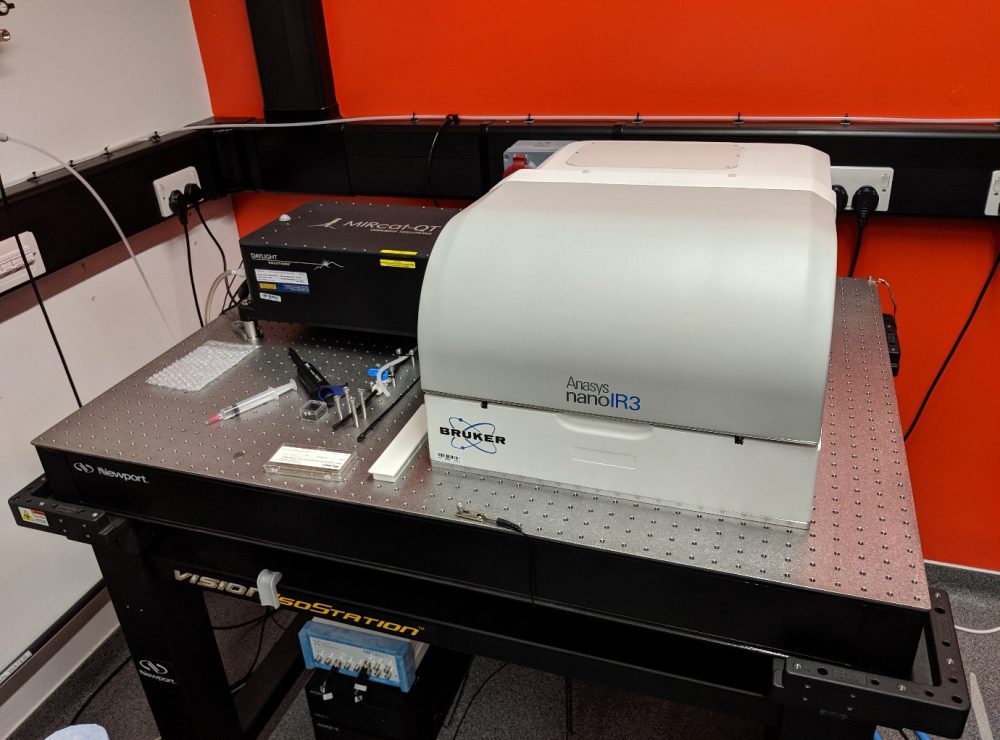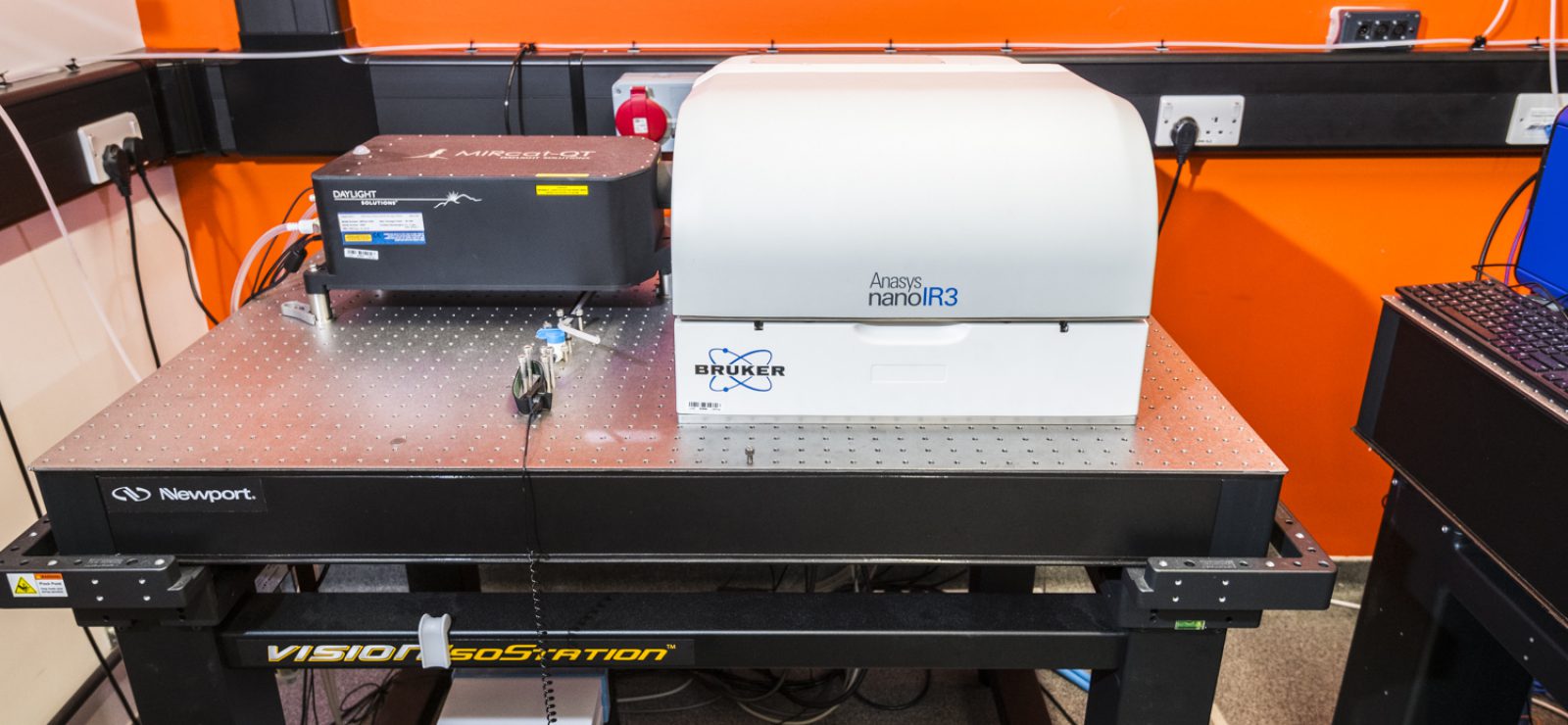This website uses cookies so that we can provide you with the best user experience possible. Cookie information is stored in your browser and performs functions such as recognising you when you return to our website and helping our team to understand which sections of the website you find most interesting and useful.
Bruker NanoIR3-Fluid system with QCL Laser
Atomic Force Microscope with Infrared Spectroscopy for Fluid Systems
The NanoIR3-Fluid system enables the chemical characterisation of a sample in air and fluid, providing IR absorption spectra, mapping and topological measurements at nanoscale resolutions.

NanoIR3
- Partner:The University of Manchester
- Facility:National Graphene Institute (NGI)
Or call us now on 0161 275 8382
Detailed Description
The Bruker NanoIR3-FLUID system is an AFM (atomic force microscope) instrument coupled with an infra-red laser light source which detects thermally expanding materials with nanoscale resolution.
This system has the ability to work both under dry or wet conditions making possible to perform experiments in-situ. The imaging of both sample types requires the incident laser source on this system to illuminate the sample from below. The strong absorption of water often reduces the effectiveness of IR spectroscopy on hydrated samples. To get around this, the incoming IR undergoes total internal reflection in an IR transparent crystal on which the sample sits. The evanescent wave that this produces is strongly localised on the crystal face and the sample in contact, and therefore IR transmission and absorption through the liquid is limited. As the AFM probe is in contact with the top surface of the sample during acquisition, there is a requirement that the sample thickness is low enough for an expansion to be detected.
Uses/Applications
The instrument allows for local structural and chemical characterisation of samples in fluid, providing the user with information on mapping of material heterogeneity, interaction with its environment, along with other properties.
Sample and general instrument specifications
• Max. sample width = 25 mm2
• Max. sample height = 100 nm
• Motorised stage range: X,Y = 4mm2; Z = <10 mm total
• Optimal sample thickness for measurement – 20-100 nm
• Spatial resolutions for IR imaging modes- contact resonance AFM-IR X,Y = 10 nm; Z = 50 nm (sample dependant, potential to be decreased)
• Possible AFM-IR modes: Contact, Contact resonance, Tapping mode (non-fluid), hyperspectral imaging
• Laser operation in the wavelength range of 800-1950 cm-1 (Daylight MIRCAT-QT 4 chip)
• Spectral resolution of 4 cm-1


